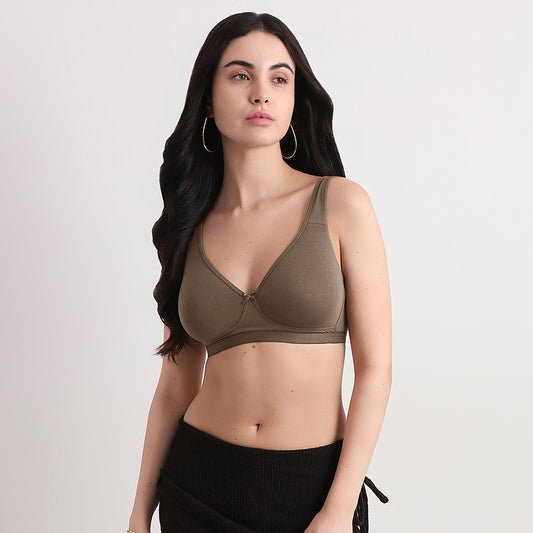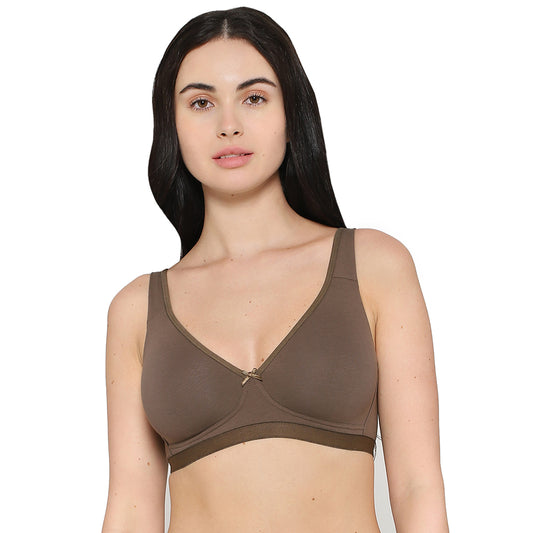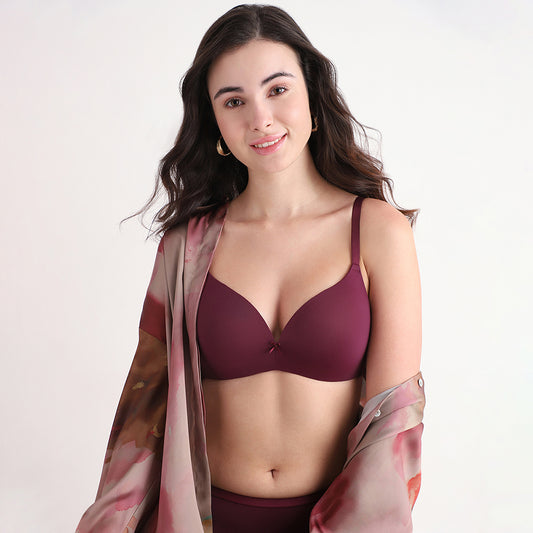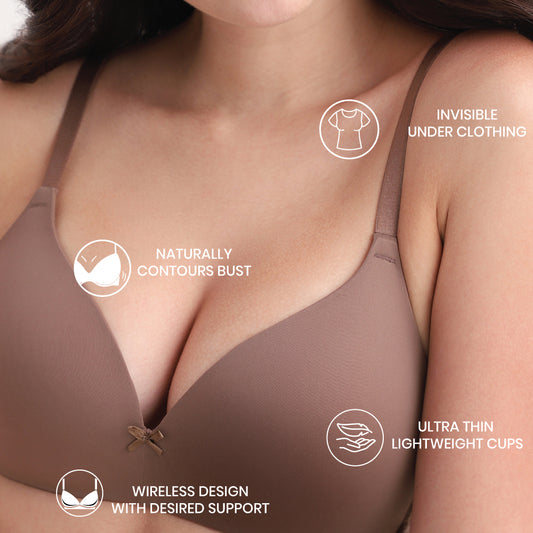Did you think your nagging back ache was caused by bad posture or heavy bags? Think again! It could just as easily be linked to what you’re wearing underneath your clothes. Yes, believe it or not, we’re talking about bras.
A 2008 study around breast size, bra fit, and thoracic pain in younger women found that 80% of participants were wearing the wrong bra size. So yes, for many women and teen girls, especially those with larger busts, wearing the wrong bra can cause persistent discomfort, shoulder tension, and even lower back pain. So, if you find yourself constantly adjusting your straps, dealing with red marks on your skin, or feeling sore by the end of the day, your bra may be to blame.
But the good news is that help is at hand. And no, you don’t need a complete wardrobe overhaul. In this guide, we’ll give you practical, supportive (literally!) tips to ease back pain caused by your bra and prevent it from coming back.
Find out how to stay supported without the strain in five simple steps.
#1. Get Professionally Fitted
Almost 80% of women wear the wrong bra size. But wearing a poorly fitting bra does not just upset how your clothes fall. It could also be the reason behind your back ache that never seems to go away.
Four signs that your bra does not fit:
1. Your band rides up your back.
2. Your straps dig into your shoulders.
3. You can feel the underwire pressing uncomfortably into your skin.
4. You frequently adjust or tug your bra throughout the day.
But why does this happen? Well, it turns out wearing loose bands or tight straps can shift the weight of your breasts onto your shoulders and upper back. That’s what causes strain. The solution? Get professionally fitted. Most lingerie or department stores offer free fitting services, and it’s worth doing at least once a year. But when you can’t do that, you could try Wacoal’s Fit Guide to measure your cup and band size and find a right-fitting bra.
Even if you think you know your size, remember that sizing can vary across brands and styles. So, it’s important to check your bra size calculator regularly. Especially after major life changes, like weight gains. pregnancy, or puberty. Read our earlier blog on The Importance of Fit: How to Find the Perfect Bra for Your Body
#2. Prioritize a Supportive Band Over Straps
Did you know your bra band should do 80% of the support work, not your straps? That’s why loose straps hurt your shoulders. It leads to pressure that pulls your posture forward and causes back and neck pain.
Four signs that you do not have a supportive band:
1. You do not have a firm and wide band that lies snugly around your ribcage.
2. Your bra is riding up at the back. It should sit level with the front.
3. You still need three or more hook closures for even pressure distribution.
4. You are missing reinforced side wings or boning for extra support.
Remember, when trying on a new bra, start with the loosest hook. This allows you to tighten the band as it stretches with wear. A good band should feel secure without being tight or restrictive.
#3. Choose the Right Bra Style for Your Body
Not all bras are created equal. Some are designed for aesthetics, while others prioritize support and comfort. If back pain is a concern, choose styles that distribute weight evenly and offer full coverage.
Three supportive styles every woman should own:
1. Full coverage bras: These encapsulate the bust and prevent tissue spillover, giving you a more secure fit.
2. Longline bras: With a wider band that extends further down the torso, these provide extra structure and reduce strain on the shoulders.
3. Posture bras: These feature built-in back support panels or crisscross reinforcements to encourage alignment and reduce slouching.
Let go of delicate or minimal designs that lack sturdy bands or side support. You will immediately the difference immediately when you switch to a bra that’s designed to support your body, and not just enhance your shape.
#4. Try a Bra with a Racerback or Cross-Back Design
If your shoulders are narrow or sloping, chances are your straps are constantly slipping. Not only is this annoying, but it can also lead to overcompensation and tension in your upper back. That’s why racerbacks or cross-back bras are game-changers.
3 ways racerbacks can help your back:
1. Prevents straps from slipping off your shoulders.
2. Distributes weight more centrally and evenly across the back.
3. Encourages a more upright posture.
These designs are especially helpful during movement-heavy days or light workouts and can be found in both sports bras and everyday bra styles.
#5. Try a Bra with Added Back Support
Some bras are built specifically with a healthy back in mind. Such styles are particularly helpful for certain conditions, like when you have a larger bust, spend a lot of time sitting or standing, experience chronic back tension
Three features that give the back support you need:
1. Wider back panels that distribute pressure and prevent digging,
2. Cross-back elastic reinforcements that gently align the shoulders
3. Posture-enhancing stitching or compression fabric.
Pairing these bras with the occasional wearing of posture braces or supportive camisoles can also help retrain your posture and reduce long-term discomfort.
Remember, Your Bra Should Be the Support You Can Count On
If you’ve been putting up with bra-related back pain, it’s time to rethink what you’re wearing. A well-fitted, supportive bra doesn’t just help your bust — it protects your posture, relieves tension, and boosts your confidence from the inside out.
In this guide you’ve seen how you can get professionally fitted and recheck your size regularly, choose scientifically deigned lingerie, and try posture-support bras.
Your bra should never be a source of pain. With these tips, you can ease back discomfort and feel properly supported — all day, every day.










